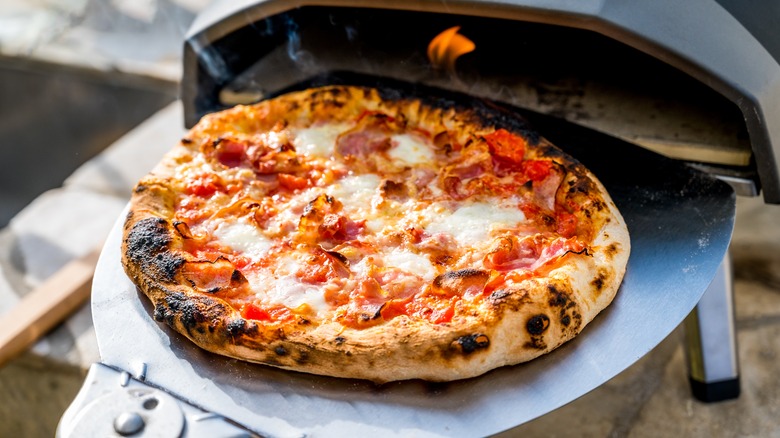The Real Reason You Shouldn't Roll Out Pizza Dough
Ah, pizza. The classic Italian pie has inspired restaurants, pizzaiolos, and songs galore — and many a pilgrimage to Naples. But you don't need to book a flight or buy an expensive brick oven to taste the dolce vita from your home. Instead, tighten your apron and get to kneading. Different regions in Italy and beyond put their own spin on this beloved dish, from the thick Chicago-style dough to the thin, crispy crust of the Neapolitan trademark. Meanwhile, Sicily's spongy sfincione pushes the border of what qualifies as pizza, veering into focaccia territory.
Yet no matter what style you select, real pizza lovers know: that it's not about an intricate sauce. Most Neapolitan recipes call for nothing more than tomatoes and salt, per Serious Eats. Nor is pizza really about the cheese (a sprinkle of mozzarella will always suffice). Instead, the key to a delicious pizza is all about that base. Dough recipes vary, from quick day-of kneads to yeasted concoctions that require multiple days of rising, but one standard remains as a major pizza faux pas.
(And no, it has nothing to do with pineapple toppings.)
Rolling out pizza dough inhibits rising
There's a reason Italians toss their pizza dough, per Eat This, Not That. Rolling out the dough, whether with a rolling pin or another apparatus (hello, wine bottle), can harm your dough's structure, negating all your hard work. The kneading process, as well as flour type, allows your dough to first form the desired structure that makes for a chewy — not solid — crust, via Serious Eats. Chef J. Kenji López-Alt explains how large bubbles are essential for creating a delicious and texturally sound dough. At-home cooks first ensure this high quality by kneading their dough, allowing proteins to form and gluten to develop. Gluten gives bread structure, while protein allows the dough to stretch and create air pockets.
Once this happens, it's crucial to protect those air bubbles. According to Stella Culinary, rolling pins push out the gas, removing air and toughening dough. Dough needs those bubbles to rise, so wash your hands and get to tossing. If you're afraid of dropping your pie, your hands will suffice; Crust Kingdom promises that using fingers to stretch out a dough will achieve the same effect because you'll push out the base in a non-uniform manner, keeping air bubbles. Add a drizzle of oil or a sprinkle of cornmeal, and your crust will be worthy of the Italians.

